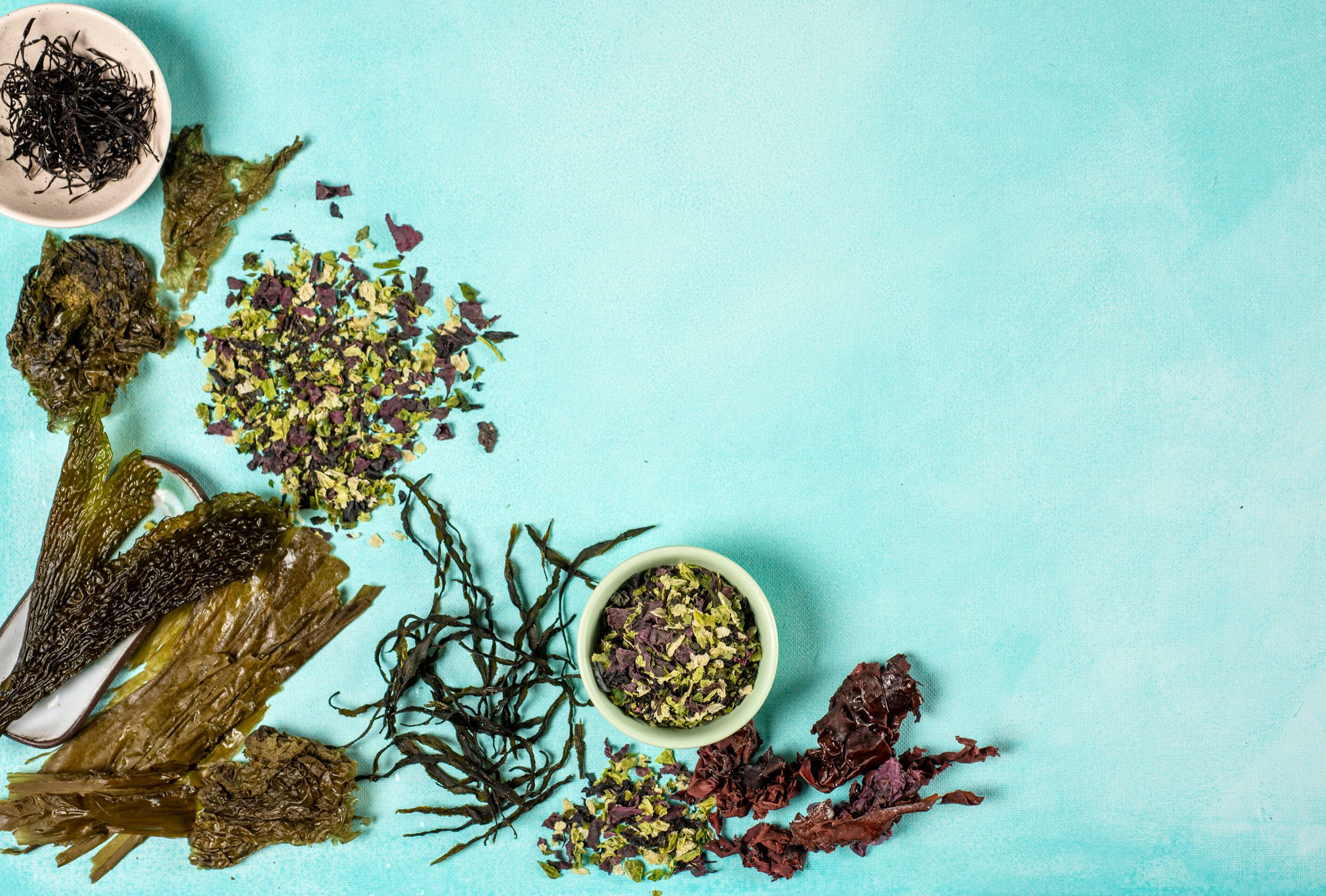Seaweeds: Local and Historical Superfood
Nori, sea lettuce, bull kelp, dulse, wakame: sea vegetables, or colloquially “seaweeds,” go by many names and have been a mainstay of West Coast and international food culture for millennia. And with good reason—they are plentiful, versatile, highly nutritious and distinctly flavourful. With over 650 species growing in the Pacific Northwest, 530 of which grow around Vancouver Island, seaweeds form an integral part of local marine ecosystems and have a long history as a traditional food source for coastal First Nations. Today, Vancouver Island procures and exports some of the world’s finest wild harvest seaweed during early spring and summer.
The term “seaweed” is actually a misnomer: seaweeds are not plants, but rather a diverse species of macroalgae. My first experience with this unassuming fare came in the form of neatly wrapped packages of rice, avocado and crab, tucked flawlessly into a dark nori wrapper at my local Japanese restaurant. While the thought of consuming seaweeds was a tad overwhelming to me some 20 years ago, it has since become a welcomed ingredient in my household.
But seaweeds aren’t reserved just for sushi rolls. They have steadily made their way into everything from craft beer to pharmaceuticals, agriculture, nutritional supplements and even beauty products. Red seaweed extract, labelled as carrageenan, is widely used in commercial food production as a stabilizer and thickener in everyday products like ice cream and almond milk. In gastronomy, seaweeds are revered as a delicacy with their complex and varying flavour profiles that range from subtly sweet to smoky with varying degrees of umami and salinity.
Commercially, seaweeds are primarily found dehydrated. From there, they can be hydrated and used in salad or added to soups for a unique texture and vegetal flavour. Flaked or powdered seaweeds are often added to smoothies or baked goods for a nutrient boost or used as a salt replacement in savoury dishes. Moreover, seaweeds are favoured for their high vitamin and mineral concentrations and harvest sustainability; as a result, these ancient sea vegetables are often marketed as a new-age superfood, often being called “the new kale.”
Regardless of their wide range of culinary uses or alleged health benefits, experts recommend consuming seaweeds in small amounts and from reputable and organic sources to limit environmental pollutants or other contaminants—moderation is important when it comes to this powerhouse from the sea. While toxicity from seaweeds is rare, it is possible to consume too much, and side effects have been known to occur. A little goes a long way!






